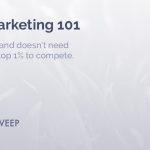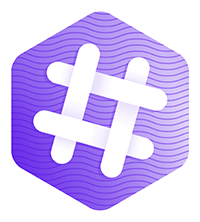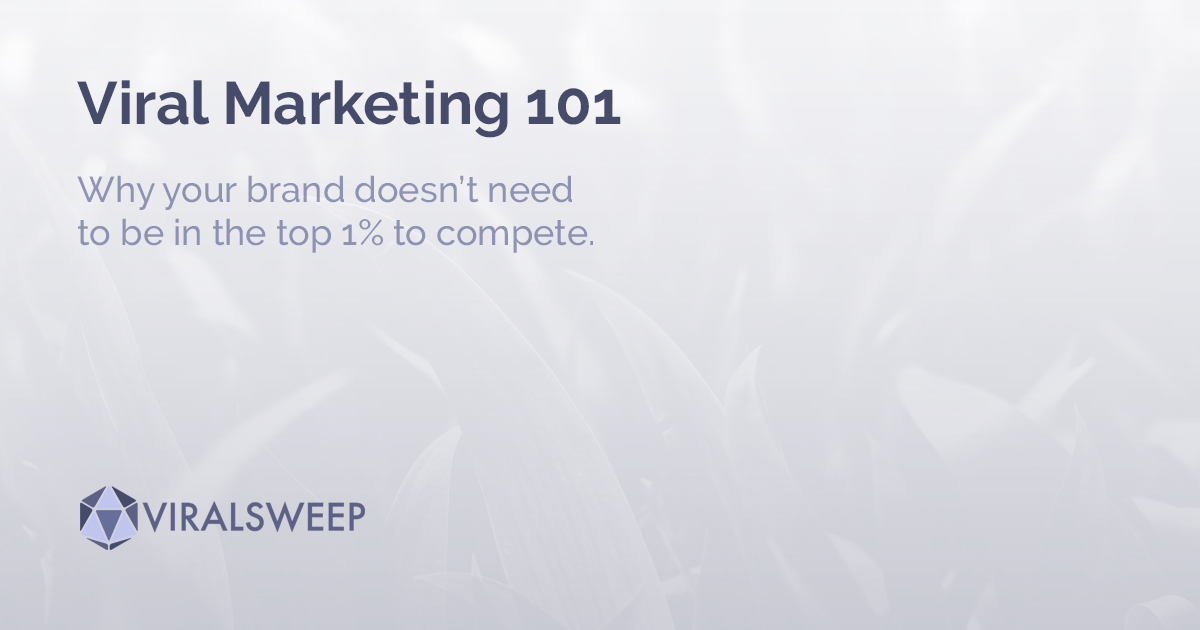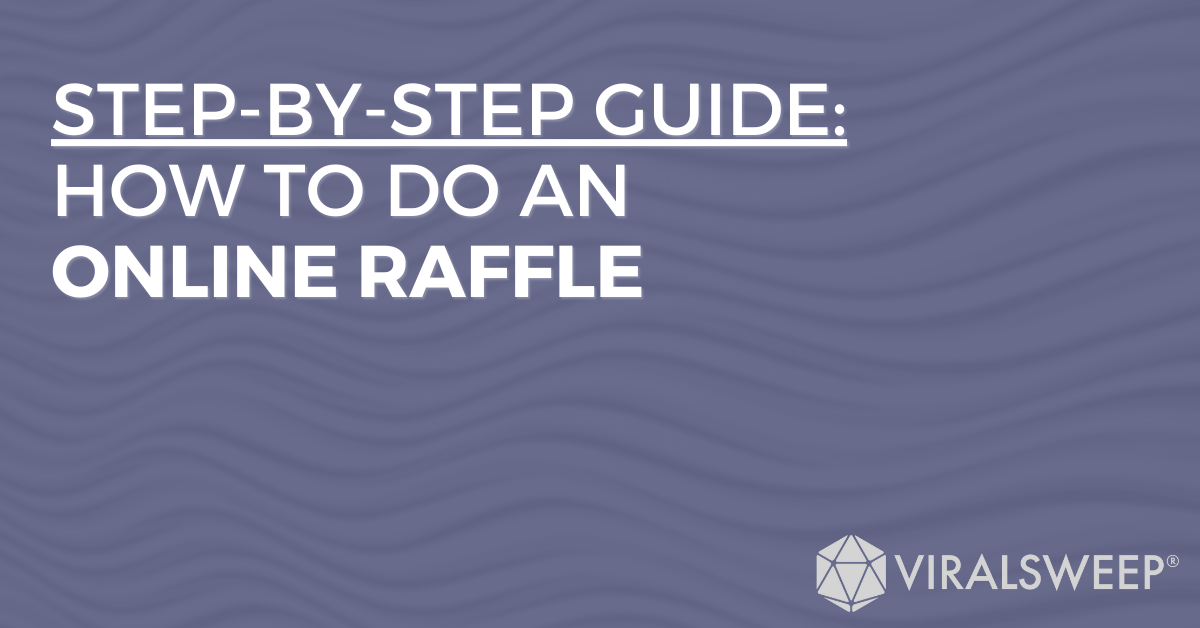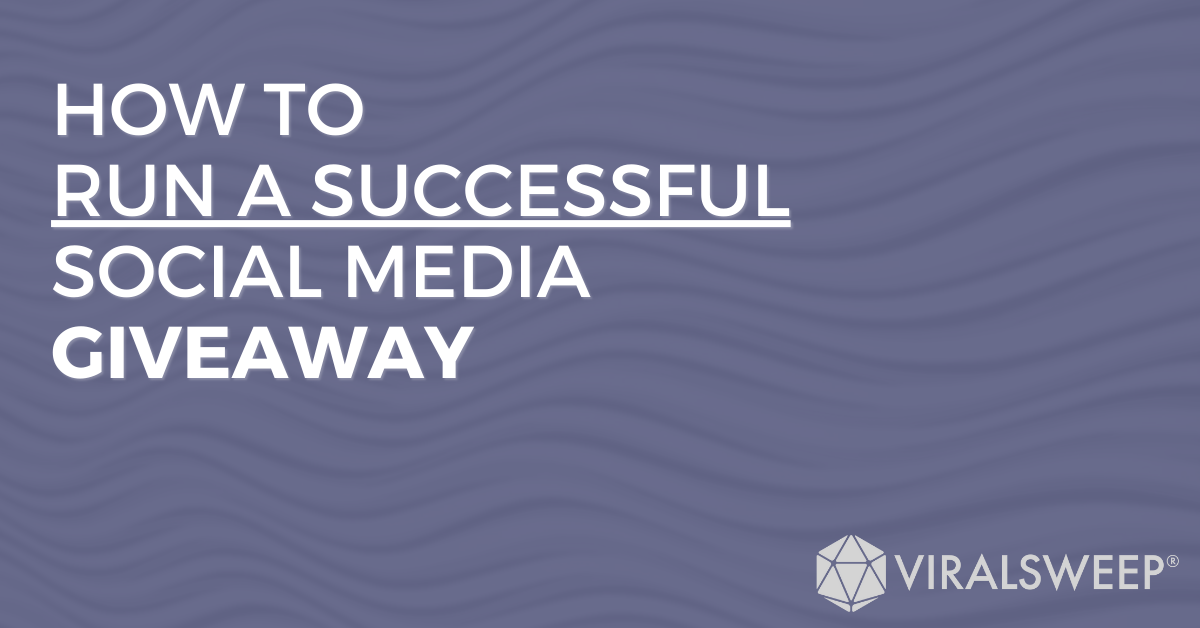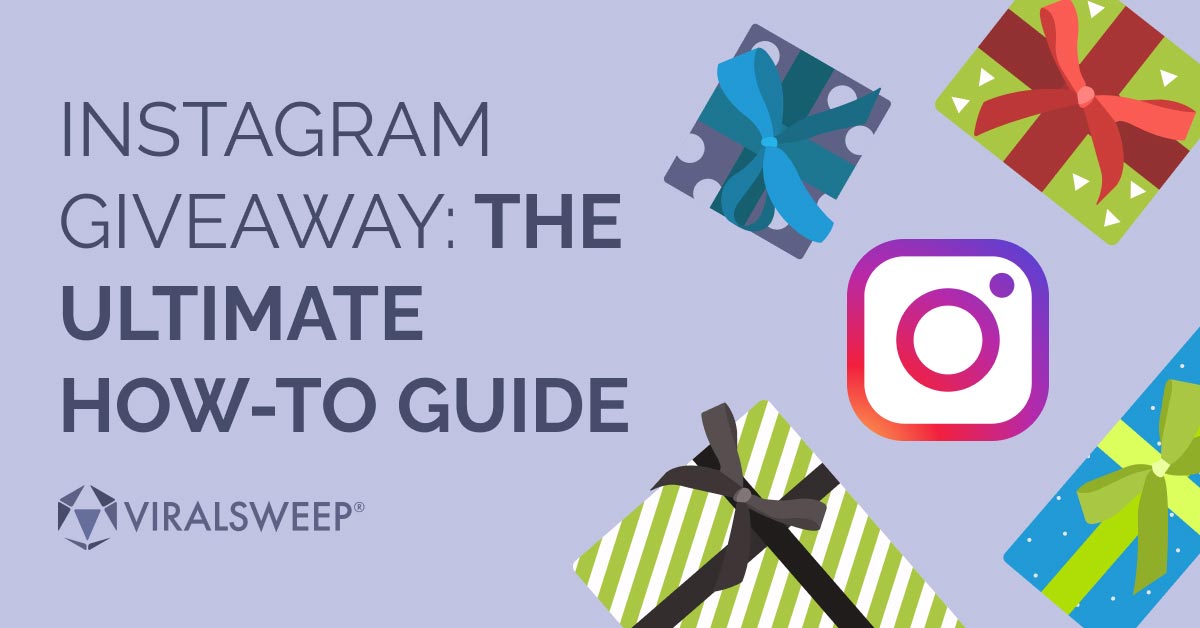It can be prohibitively difficult to beat competitors where they are already marketing.
Maybe your brand can’t compete with a competitor’s budget, they have an audience several times larger than yours, or they are masters at optimizing their cost per click.
Do you simply copy what they do and hope you can magically catch up?
Absolutely not. We see too many brands doing this. Copying might help you grow initially, but once that tactic stops working, your brand won’t have a strategy for what to do next.
Every company has a different long-term strategy, so copying short-term tactics from your competitor won’t help you build a sustainable business.
Enter PriceKnock.
Going Head-To-Head Against the Competition Cost Us Our Business
Before ViralSweep, we created a company called PriceKnock where we offered daily deals strictly for online retailers, similar to how Groupon and LivingSocial were (at the time) only for brick-and-mortar stores.
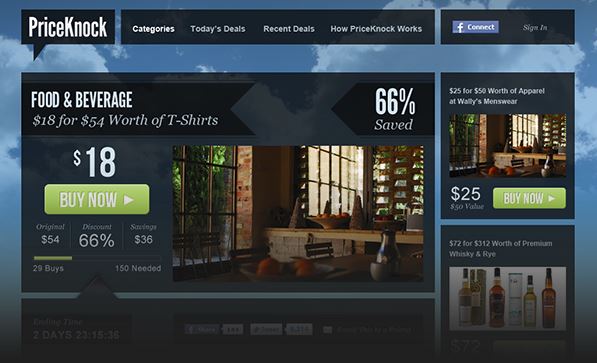

We worked our connections with online retailers to secure the first handful of deals, then started building our email list using paid advertising.
It took less than one week to uncover how Groupon and LivingSocial were using Google ads and Facebook ads as their battleground, inflating the cost of acquiring a single paying customer from Google ads to $50. They were untouchable!
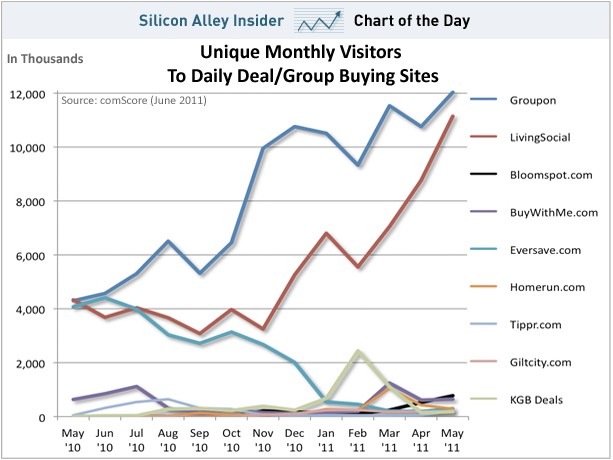

Groupon and LivingSocial had more funding and could out-spend everyone in the industry.
Their company valuations were rising so quickly that all they could focus on was out-growing their competition rather than generating enough revenue to cover the cost of those expensive emails.
Instead of trying to compete where the giants were fighting each other, we moved away from paid advertising and implemented viral engagement into PriceKnock’s customer sign up sequence.
This helped us grow our email list to 20,000 customers in our first month.
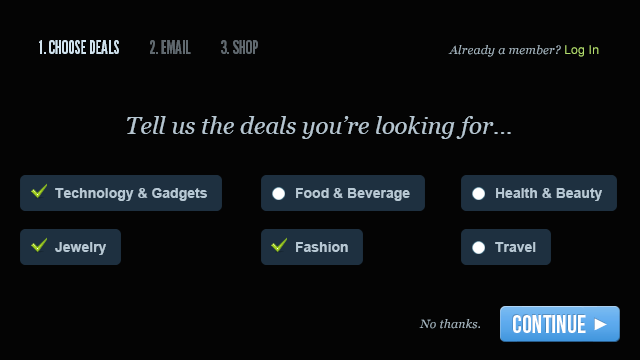

After filtering what categories they desired, customers were prompted for their email and to recommend the day’s featured deal to a friend for an additional discount.
Ultimately, we realized the unchecked spending of Groupon and LivingSocial would cause stress on retailers, so we shuttered the doors of PriceKnock as quickly as possible.
We weren’t comfortable forcing small brands to sacrifice their reputation to attract customers when they could create viral growth by themselves—without relying on giant coupon sites.
Both Groupon and LivingSocial ended up being successful, but have also suffered massive devaluations.
We took everything we learned in building PriceKnock and used it to build ViralSweep so brands could experience viral growth without having to spend $50 to attract a customer.
Your Brand Doesn’t Need to Be Number One to Be Successful
Since launching ViralSweep in 2012, we’ve learned a simple truth from helping our customers: your brand doesn’t have to be number one to be amazingly successful.
Example: Our customer, JewelScent, utilized viral marketing to take on the larger incumbent brand, Diamond Candles.
You don’t need to have the top ad spot, or the best cost-per-acquisition, or the biggest audience… and you definitely don’t need to blindly rely on copycat tactics.
Taking the number one spot takes a lot of time and effort.
How do you match or even surpass your competition when they’ve accomplished a superior position to you?
You could focus on ousting the competition as the top 1% or even top .01% of the market—becoming the absolute best. But is that worth your time?
Or you could find two areas where your brand is pretty damn good, and combine them together. This is much easier.
Everyone has a specialty.
Your brand is more than likely in the top 10% in at least two areas already, like copywriting, design, customer support, fulfillment, etc.
This post will show you how viral engagement works and provide the knowledge needed to be in the top 10% for viral marketing.
Then you can pair viral marketing with one of your core “top 10%” skills for a head-start in overcoming your competition.
By combining viral marketing with one of your top skills, you’ll uncover avenues where there is very little competition and where you have a distinct advantage.
This unique overlap is the perfect place where you can execute your marketing strategy to act as a force multiplier for your brand, as Tim Ferriss describes in a Q&A episode of his podcast (around 36:30):
“Marc Andreesen and Scott Adams have talked about this combining of two things you’re in the top 10% in ability for. [This] often beats the one person who is attempting to be in the top 1%.
So if you’re attempting to go into the NBA: [there is a] very, very hard road ahead of you; unless you are the one in a million who are going to make it.
If, however, you are a really good engineer and combine that with a law degree, well, that is pretty odd. That’s an unusual combination. You can take that a long, long way… That’s a force multiplier.“
Viral Marketing: A Force Multiplier for Your Business
Traditional marketing focuses on a one-dimensional transaction: You pay $5 and acquire a customer.
So in this case, $5 = 1
Example: When we ran PriceKnock, it was $50 = 1 customer, and not all customers would bring $50 in revenue. Ouch!
Add in a viral loop to your marketing and now you’re paying $5 for that same customer plus incentivizing the customer to refer their friends.
This would be $5 = 1 + n
With viral marketing each new customer comes with a lottery ticket, and your prize is free customers. Customer A may refer 2 close friends, and Customer B might refer 200 because they have a large following.
Example: With the viral engagement we built into PriceKnock, if one excited customer referred 10 friends, that original $50 would now get us 11 leads total. That’s about $4.50 per lead instead of $50, which is much more reasonable!
What is Virality?
In short, viral marketing is…
“achieving marketing objectives (such as product sales or marketing buzz) through a self-replicating viral processes, analogous to the spread of viruses or computer viruses.”
In 2012, startups obsessed over variables called k-factor and cycle time which make up a simple formula for modeling social growth.
The popularity of this formula is why so many websites and apps you signed up for would ask you to spam your email contacts with invites and “like gate” content. If the brand achieved a k-factor higher than 1 (each new customer refers more than 1 friend) they were considered “viral.”
A “viral” startup’s growth would look like this.
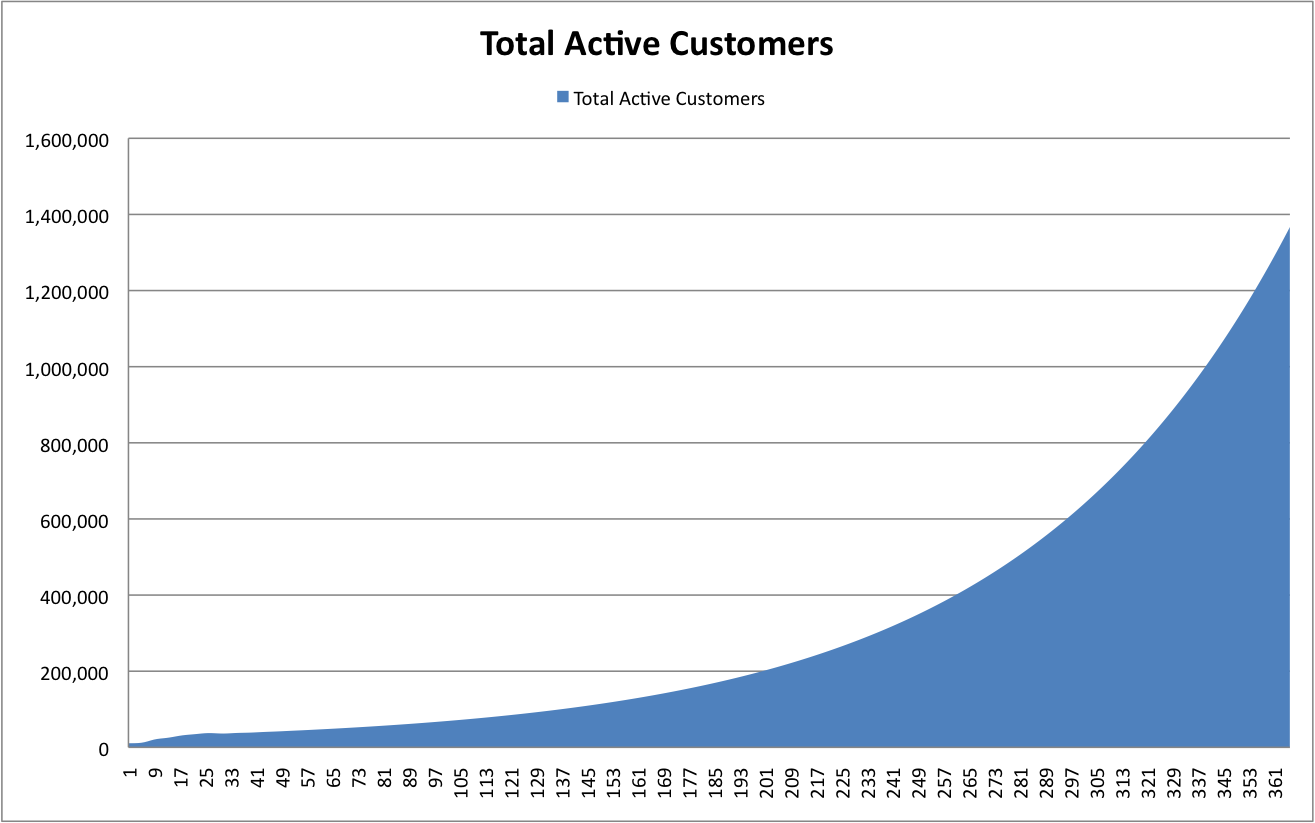

Source: Trigger.io
Today in 2017, brands have matured to realize that creating a viral company isn’t the goal. Instead, today’s top brands build a great product and leverage virality if it happens. Much healthier.
Virality is temporary, and this is a good thing. The temporal nature of virality provides a cooldown period where your brand can properly support your new customers and mindfully improve your product.
Growing too quickly can damage your brand and fatigue customers.
Different Types Of Viral Loops
Josh Elman describes five types of virality (also in infographic format) that we’ll use as a reference, but keep in mind they each overlap and are loosely defined.
As technologies and social norms change, the nature of viral marketing will change as well.
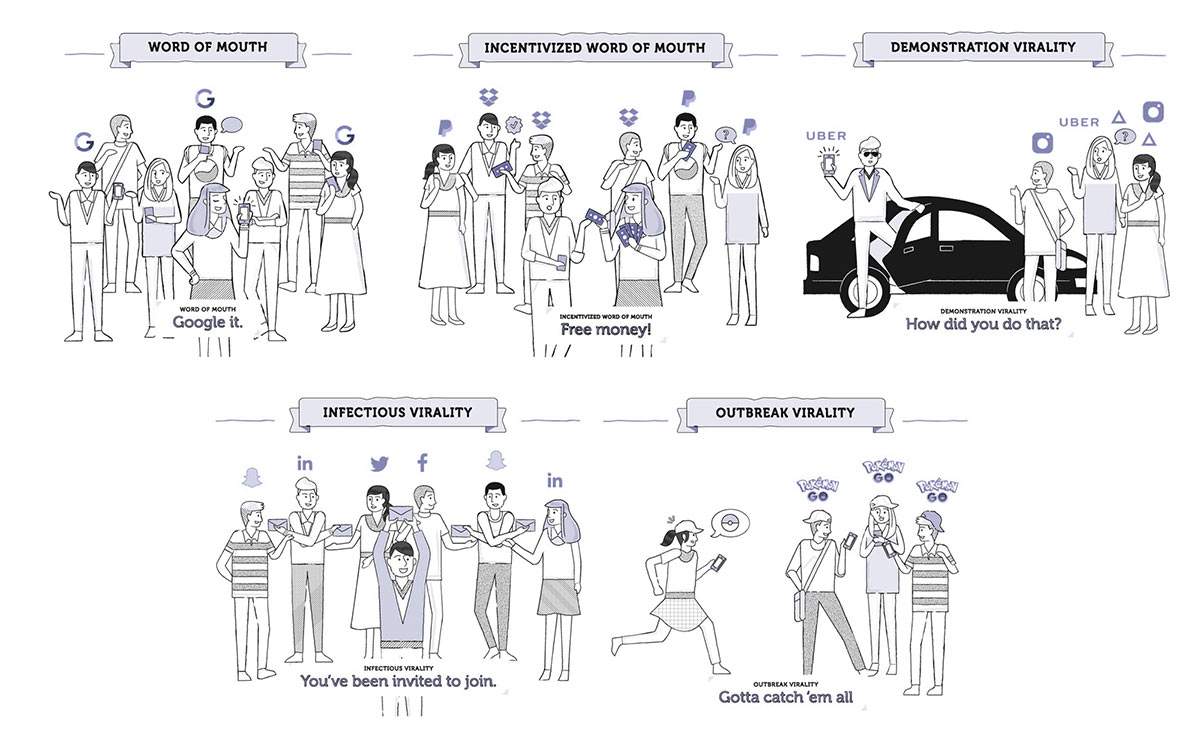

1. Word of mouth
“Just Google it.”
What Makes Word of Mouth Work?
Products that grow from word of mouth are often described as the absolute best in their class, where they are several orders of magnitude better than every other product on the market.
Challenges of Word of Mouth Virality
These types of brands focus on leaving a footprint in their customers’ minds, focusing on branding and recognition. Almost always, they shine because of their simplicity. Fast growth makes it difficult to maintain simplicity.
Examples of Word of Mouth Growth
- Every email from a Hotmail user had a signature saying “PS. Get your free email at Hotmail”, which helped them acquire 12 million users before Microsoft purchased the company. Hotmail made email accessible to anyone in a time where setting up email was difficult for the average person—all you needed was a web browser.
- A more current example is Allbirds, whose brand focuses on making the most comfortable and eco-friendly shoe possible. Are they the most comfortable or most eco-friendly shoes in the world? Not likely. However, they’ve brought these two “top 10%” focuses together to offer a product that is worth talking about. As a result, Allbirds surpassed sales projections four times over in their first 10 months.
2. Incentivized
Offer a carrot.
What Makes Incentivization Work?
Incentivizing customers is great for product launches (waitlists) and short-term growth (referral systems) because they receive a direct reward for helping spread your brand. Example: providing a 10% discount when a customer shares your brand.
Challenges of Incentivized Virality
Work within your margins if your brand is bootstrapped, or raise capital to front-load the costs of incentivized customer acquisition. Many Kickstarter campaigns meet their fundraising goal but ultimately fail because the founders didn’t know their real product margins.
Examples of Incentivized Growth
- Because they knew that payments via email would eventually become the norm, PayPal wanted to become top-of-mind among customers. To do so, they offered $10 in PayPal credit when customers created an account and every time they referred another customer. They attracted 100,000 users in their first month because they had the funding available to offer a big enough carrot to attract users.
- Similarly, Dropbox was able to replicate this process by offering storage space per signup and referral. Because digital storage becomes cheaper over time, Dropbox knows their referral system will become a smaller and smaller percentage of their overall marketing costs as the company grows.
- Fab, and more recently Harry’s, created wait lists before launching, where customers would earn free products and discounts by referring friends to join the wait list. The more friends you refer, the bigger the discount and the more the free products you receive. Harry’s wait list gathered over 100,000 emails in its first week.
3. Demonstration
Me too!
What Makes Demonstration Work?
Demonstrated virality relies on social proof by enticing customers who want a taste of what current customers are getting.
In his book Influence, Robert Cialdini states that “we view a behavior as correct in a given situation to the degree that we see others performing it.” If your product makes a customer look good, other people will want to look good as well.
Challenges of Demonstration Virality
This method is heavily affected by trends or fads; particularly in fashion, music, and technology.
Early adopters and influencers in these categories take pride in being first, and their status as being somebody with good taste is threatened when too many people use the same products. It takes constant effort to maintain relevancy.
Examples of Demonstrated Growth
- In its early days, Uber was focused solely around providing an elevated experience by allowing customers to hail a limo instead of a taxi. The brand leveraged the exclusivity of their limo service to gain customer and media attention before expanding their scope and becoming the Uber of today.
- Services like Pinterest and Instagram provide influencers a platform to exhibit their taste through curated image and product galleries. Brands are able to buy ads on the network or promote influencer content to gain exposure.
4. Infectious
n + 1
What Makes Infectious Marketing Work?
By leveraging network effects, infectious products become more valuable as more people use them. This method applies best to tech products focused around communication.
Challenges of Infectious Virality
Infectious virality should be a core feature of your product because it’s difficult to bolt on to an existing product and get meaningful results.
For example, some brands ask you to import your email contacts as an invitation mechanism. While it may work, it can also violate users’ trust in your product and ultimately diminish the strength of the network.
Examples of Infectious Growth
- Facebook is the obvious example of a brand who leverages infectious virality to grow. By focusing on users’ “AH-HAH!” moments, Facebook encourages users to add or invite 10 friends within 14 days, creating a habit of logging in daily. The average Facebook user now has 338 friends.
- Content also creates leverage for infectious growth. Brands like Quora and Reddit benefit from having content for potential users to stumble upon. Every new user brings value to all users both by creating additional content and providing feedback by “upvoting” content they like—each upvote acting as a form of social proof.
5.Outbreak
“You HAVE to see this!”
What Makes Outbreak Marketing Work?
Outbreak virality is what people typically think of when you say something “goes viral.”
It could be a piece of content that is so funny you have to share, or an app so addictive you find yourself using it multiple times a day. Outbreak content usually bridges an absurd or novel topic with new technology, humor, accessibility, etc.
Challenges of Outbreak Virality
Creating an outbreak product or piece of content is risky because it requires all of the work up front. It’s difficult to recover if the launch flops, but when a launch succeeds the rewards can be immense.
Examples of Outbreak Growth
- Most outbreak virality happens with content. Traditionally, it was Superbowl commercials like Apple’s 1984 ad, but now Facebook and Youtube enable brands like Dollar Shave Club to make a massive impact on a small budget. Their original viral video helped Dollar Shave Club build a brand that sold to Unilever for $1 billion.
- Addictive mechanics and the novelty of augmented reality paired with a classic franchise allowed Pokemon Go to become an overnight sensation that encourages a healthier gaming experience. Since its launch, over 650 million players have installed the game and walked for more than 5.4 billion miles.
- Physical products can benefit from breakout virality as well. This year, fidget spinners are inexplicably all the rage; some selling for $500. Beauty brand Sleep Styler appeared on Shark Tank and immediately sold out for 4 months. Clothing brand Roman Originals became the unexpected beneficiary of “The Dress” meme that swept social media, generating over 10 million tweets.
Deciding Which Type of Virality to Focus On
Each of the brands mentioned above have a great product that is able to retain customers once acquired.
Stable customer retention rates are what allow brands to integrate viral marketing techniques into one of the core competencies of their business.
If you have a great product that keeps customers coming back, your brand is ready to implement viral marketing techniques. But which one?
Answer these two simple questions…
- Which of the five types can you permanently support?
- Which would add long-term value to your brand?
1. Which of the five types of virality can you permanently support?
Most brands can sustain the financial aspect of their viral marketing because it generates new paying customers.
Instead, determine whether each type of viral marketing is emotionally sustainable for your brand. Which one are you comfortable committing to long-term?
- Example: Focusing on outbreak content that drives new customers can distract you from improving your product or make it difficult to target the right customers.
- Example: We don’t incentivize with discounts at ViralSweep because our product pays for itself and we don’t want to support price sensitive customers.
2. Of the types of virality you can permanently support, which would add long-term value to your brand?
Sometimes it’s necessary for a brand to change directions. Which type of virality would still deliver benefits to your brand if you removed it or stopped supporting it?
- Example: Users will still find value in Quora if the infectious viral mechanism stops working or is removed because the content is still worth reading.
- Example: Dollar Shave Club’s outbreak commercial gave them enough value to build a sustainable business. Now they don’t need viral hits to remain a profitable business.
How to Schedule Your Implementation of Viral Marketing Techniques?
Once you’ve decided the viral marketing technique that best suits your brand, it’s time to create a process for implementing it.
Using systems thinking, we can find simple ways to improve our business, even if we ultimately decide against utilizing viral marketing techniques.
First, we need to define where your brand excels, outline how that part of the business sets you apart, and then refine that area of the business to include your chosen viral engagement pattern.
- Define the areas where your brand is better than most other brands. These are your core competencies—your “top 10%” areas.
- Outline what makes you great in those areas compared to everyone else. These are the specific parts of your business that you want to tie in your viral engagement.
- Refine those parts of the business to include the viral mechanic you’ve chosen. This usually means simplifying and streamlining so that you can easily automate when your viral marketing kicks in.
Implemented Viral Marketing at Viralsweep
When we launched the latest version of ViralSweep, we knew that many of our best customers were teams or agencies who work in high-turnover industries.
To ensure members from these teams and agencies become repeat customers when they switch firms, we decided to create a simple word of mouth viral loop.
- First, we defined customer support as our core competency to focus on—where we are comfortably in the “top 10%.” Agencies who use ViralSweep are historically low-touch, knowledgeable customers who tend to user our higher pricing plans.
- Then, we outlined how our team excels at customer support. For us, it was our response time, our knowledge base, and high-touch service that agency customers valued most.
- With these focal points outlined, we refined our customer support process to provide more value, faster.
How We Refined Viralsweep to Encourage Word of Mouth Virality
We implemented Drift’s live chat, developed our Library, and improved our in-app documentation using Elev.io.
Because of these combined efforts, when an employee switches from one firm to another, we retain the old agency and gain the new agency as a recurring customer.
This particular viral loop occurs over the course of months rather than days, so take note that virality doesn’t need to happen fast.
You can repeat this process to include multiple viral marketing techniques in your business.
Scaling out ViralSweep’s customer support is both permanently sustainable and it adds long-term value for us and for our customers. In doing so, we’ve leveraged high-turnover industries to benefit ViralSweep, utilizing a long-term viral marketing strategy.
Graduating Viral Marketing 101
The process and methods outlined in this post will help you learn about your business.
Even if you ultimately decide not to add viral engagement, you’ll still create value for yourself by understanding where your business performs well and where it needs to improve.
Only then can you rise up and compete with the top 1%.

